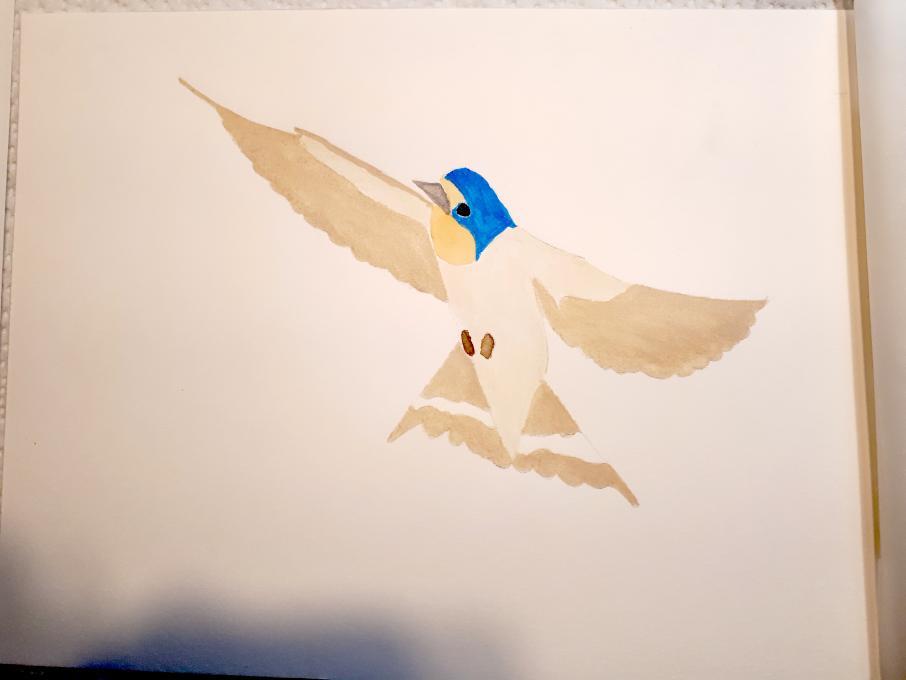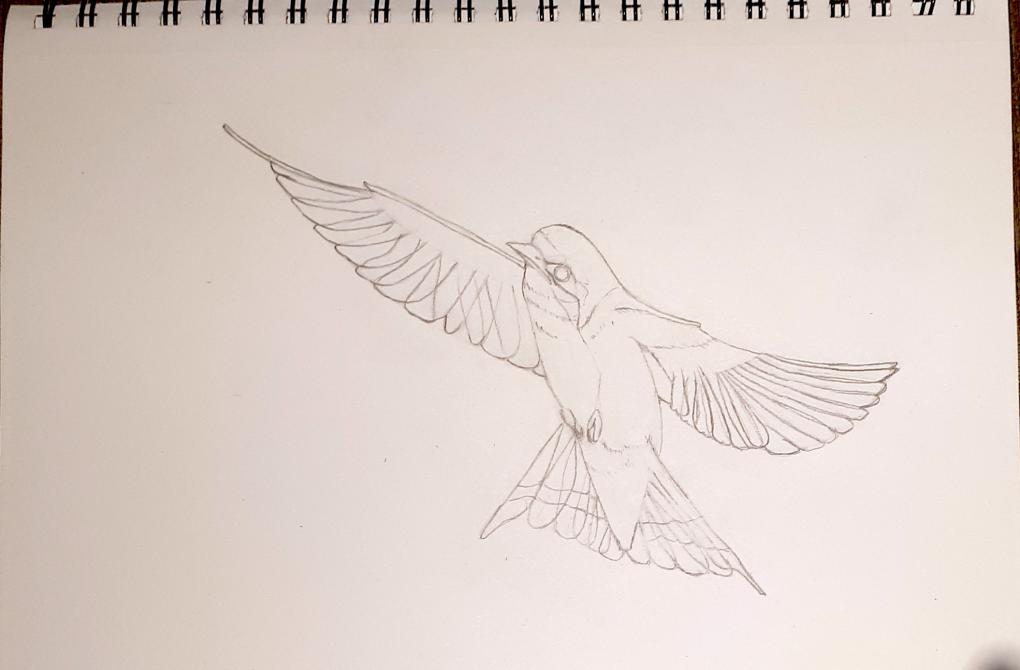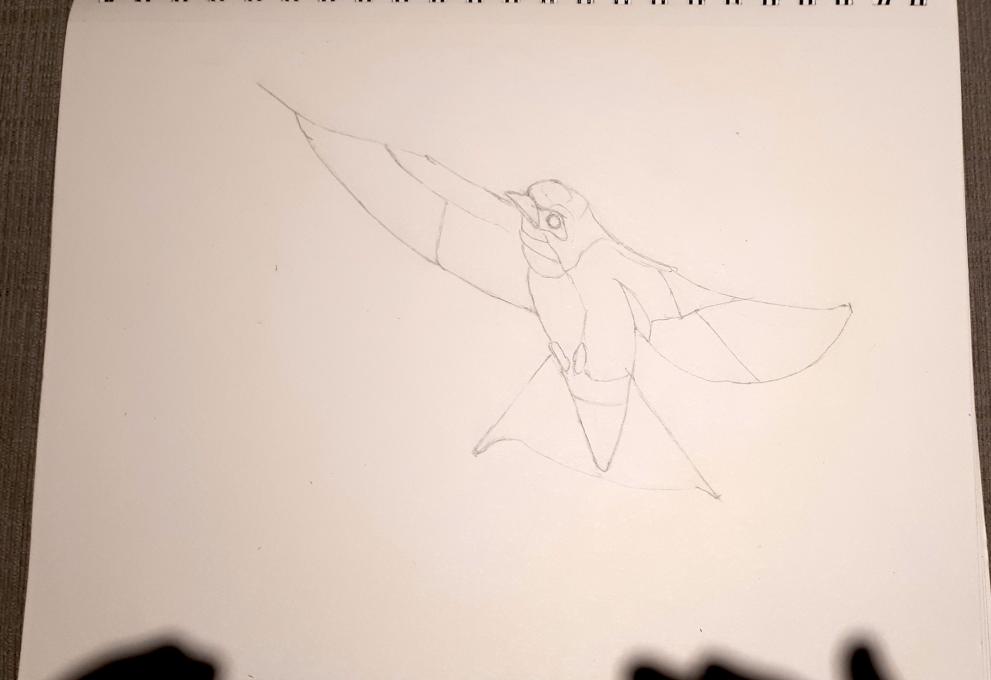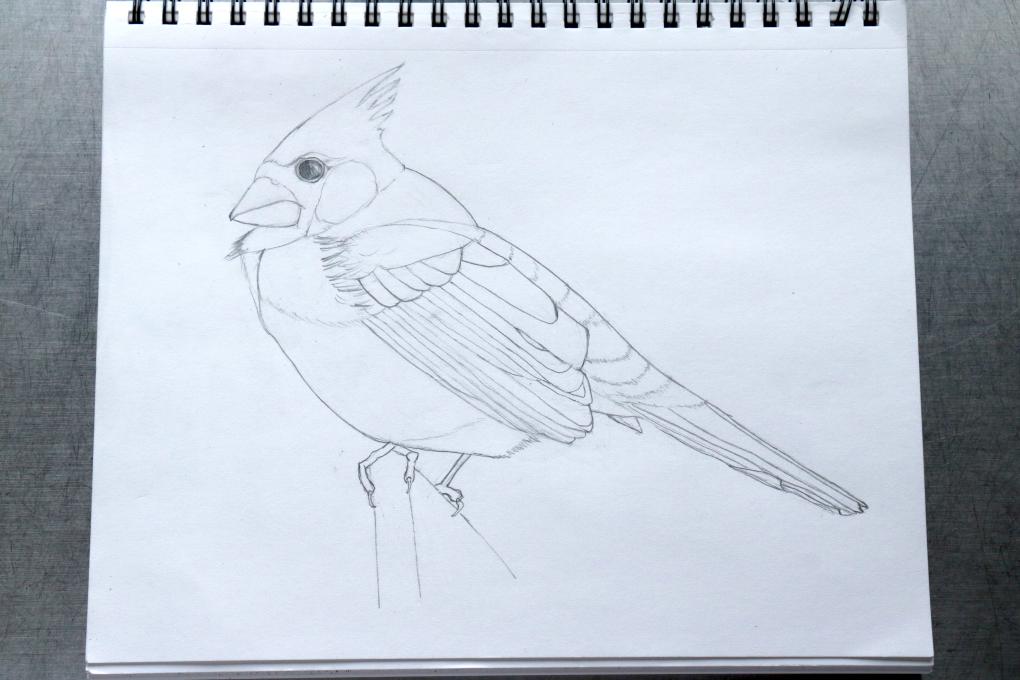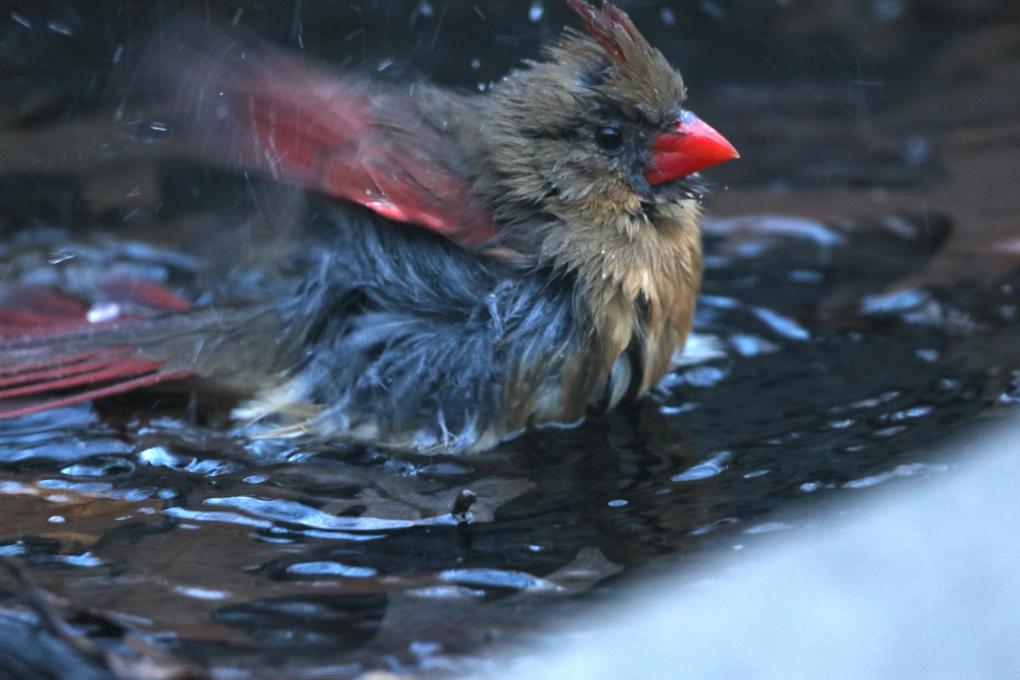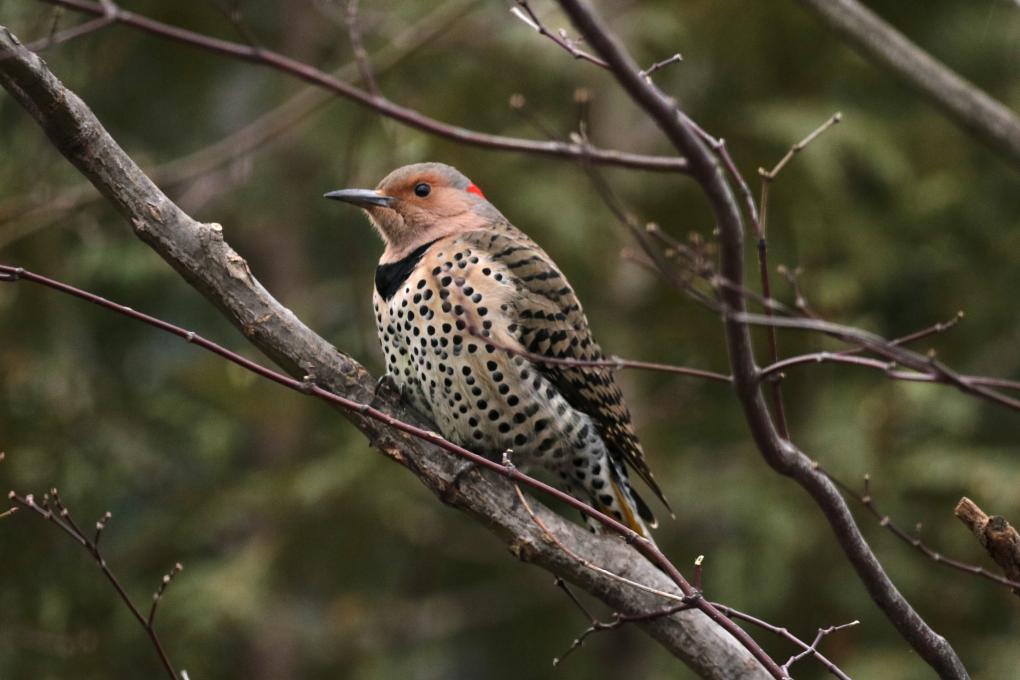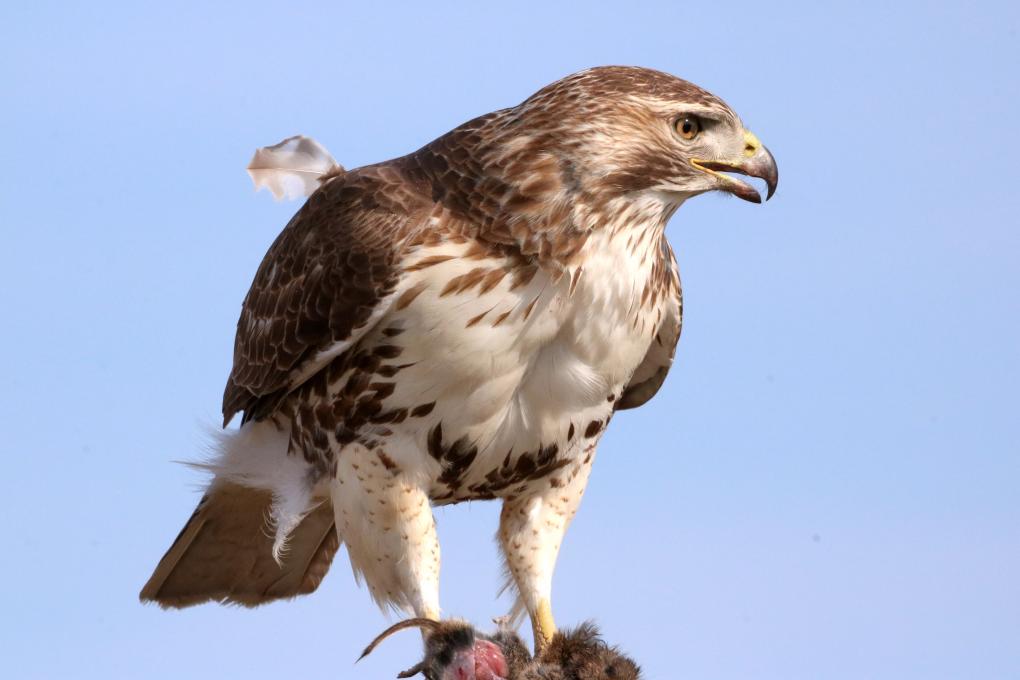Cheryl
Forum Replies Created
-
CherylParticipant
@Kaiah When I used to draw before I took this course I use regular pencils: HB, 2B and 4B. They had a wider lead and the lines were softer and smeary. The pencils never kept their points, always wore down, and you had to sharpen your pencils while you drew. My drawing style was always loose and sketchy. This is a more realistic, technical style and that is why I took this course. I wanted to learn to draw and paint a realistic bird. They recommended technical pencils. HB in 0.5 mm and 0.7 mm. They make a thinner line compared to a regular pencil, in my opinion, and the lead is always the same thickness. I preferred the 0.5 mm for its smaller size and it gave me a little more accuracy drawing the fine lines for the feathers and little details on the bird.
in reply to: Draw: Northern Cardinal Feathers #1012157 -
CherylParticipantThis is excellent Kaiah. Your hand eye coordination for an eleven year old, almost 12 is wonderful. You must have been drawing for a while. I don't think I could draw as well as this when I was your age. Keep up the good work!in reply to: Draw: Northern Cardinal Feathers #1012052
-
CherylParticipant
@Kaiah @Kaiah. Sure I will have a look at your drawing. I was waiting for you to post it. Thank you for asking my opinion. Tag me when you upload it and I will have a look at it in a few hours as I am working on something at the moment.
in reply to: Draw: Northern Cardinal Feathers #1012027 -
CherylParticipantGreat job on the bill. Wonderful.in reply to: Paint: Northern Cardinal #1009642
-
CherylParticipantI love the depth of field in your wings, they really stand out. They look so real, just like a photograph. Wonderful job.in reply to: Paint: Northern Cardinal #1009641
-
CherylParticipantI read all the comments in this forum before attempting the under painting and I still managed to paint the head too dark. So I tried adding more water to the paint, dabbing the brush before applying and then Jane said, "Don't forget to keep the paint wet as you move it around." That was a good reminder.
 in reply to: Paint: Barn Swallow Base Colors #1008230
in reply to: Paint: Barn Swallow Base Colors #1008230 -
CherylParticipantI found that I wasn't mixing enough paint and would run out of the colours I was using and that I was mixing the colours too dark as well. Practice, practice, practice.
 in reply to: Paint: Bird in a Ball! #1008021
in reply to: Paint: Bird in a Ball! #1008021 -
CherylParticipant
@Karen S. Hi Karen. I found that if you use Insert Image first and after it is uploaded, put your cursor at the top left hand of the image and hit return a couple of times, you can arrow up and see the cursor. Then type or copy your text into the space.
in reply to: Paint: Mix Colors to Create Hue #1007143 -
CherylParticipantThe drawing is completed. I could fuss over it some more, but I said no, stop. I should have taken a picture of my first lines so I could see the difference. Now the scary part start. PAINT!
 in reply to: Draw: Barn Swallow Individual Feathers #1006968
in reply to: Draw: Barn Swallow Individual Feathers #1006968 -
CherylParticipantWhen I attempted this drawing it looked so hard. So much detail and the spread wings were so daunting a task to draw, but I read all the comments from the previous students and gleaned some information to help me with this drawing. The first sketch was out of proportion and disappointing. I had an idea. I found using a see-through plastic ruler allowed me to measure the photo reference more accurately than using my pencil length as a guide. Then I broke down the areas and tried to get the angles correctly. It’s not perfect, but I am happy with my attempt. I think that looking at specific sections of the bird made it easier for me to develop it.

-
CherylParticipantThis is my first attempt at the Cardinal. The feathers are not perfect but I am really enjoying Jane Kim’s course. This style of drawing is so different from what I learned in art school over 45 years ago. You can use an eraser, and no line is permanent! I love this format too. I can draw alongside Jane and pause the video when I need to catch up. It is so much nicer then having my teacher in college standing over my shoulder watching every pencil line I made on the paper :-)
 in reply to: Draw: Northern Cardinal Feathers #1005977
in reply to: Draw: Northern Cardinal Feathers #1005977 -
CherylParticipantActivity 1: Like the title of this course birds are joyful. I have loved watching and listening to them all my life. I smiled every time my husband asked, “What’s that bird?” Now, he’s recognizing them and we are enjoying adding birdwatching to our hiking activities. Activity 2: As for steps to help the birds: *I enrolled in the Feeder Watch program this year, as well as, the GBBC, and most likely will do it again next year. I enjoyed it. *When I moved to this house 25 years ago, I dug up all the grass and planted gardens in the front and back. The birds love it. Lots of place for the sparrows to hide, many branches for the songbirds to sing from and plenty of trunks for the nuthatch and woodpecker to climb. *I am also a big fan of wild bees having documented over 40 species in my neighbourhood, so I don’t use pesticides. *I don’t have any cats, just fish in my pond. The birds love the pond, they even bathe in it during the winter. See the photographs below of a female Northern Cardinal and an American Robin using the pond this winter. *I don’t drink coffee, but my husband does, so I’ll look into that. *I replaced all my windows. *Like most people, we are conscience of all that plastic and using our own bags when shopping.

 in reply to: Activities: Helping Birds in Your World #874499
in reply to: Activities: Helping Birds in Your World #874499 -
CherylParticipantActivity 1: I am a photographer and take along my camera to help me identify what I am looking at. I have also written down notes to help me later when going through field guides. Recently, I loaded Merlin on my phone and I have enjoyed using it to record the birds singing. Activity 2: In November I signed up for Feeder Watch and I have enjoyed watching and tallying the birds every weekend. In February, I signed up for the GBBC and added another location from my own backyard to the count. I also opened an eBird account on my desktop to fill in my GBBC observations, however, I didn't realize I could continue to enter counts on a regular basis. So this information about eBird was helpful.in reply to: Activities: Keeping Track of Your Birdwatching #874472
-
CherylParticipantActivity 2: Roger Road and Mt. Lemmon Roger Road has a mixed environment with water to support waterfowl, shorebirds and gulls. It also has open fields and scrubby areas for doves, pigeons, quail and roadrunners. Mt. Lemmon also is a mixed environment. It has more trees than Roger Road, as it supports many species of songbirds and birds of prey, but it also has open areas like Roger Road that support doves, pigeons, quail and turkey too.in reply to: Activities: Exploring Bird Habitats #874437
-
CherylParticipantActivity 1: My backyard is a small city plot with old oak trees that I underplanted with cedars, Japanese Maples, Rhododendron, shrubs, and perennials. There are a lot of places for birds to hide and forage. We get a lot of different songbirds, woodpeckers and the occasional visit from a Cooper’s Hawk. In the winter we generally have 15 different species. As the migration begins the number species increases to include passing warblers, other sparrows, wrens and thrushes as they all poke through the bushes, trees and leaf litter for food. About 1 kilometre south is a Great Lake and about another kilometre west is a man-made landmass, originally formed as a breakwater in 1959. Now 60 some years have past and it has become a 500 hectare park and a recognized bird sanctuary, with breeding Cormorants and other migrating birds. I’ve not seen every bird on the park’s list. It’s a long one. A survey from 2014 recorded 316 species of birds which includes many waterfowl, shorebirds, gulls, owls, hawks, many, many songbirds and other birds. This place is a treasure trove for me. I see something new every time I visit. The photos are of a Northern Flicker in my backyard and a Red-tailed Hawk at the park. It watched it catch a rat for his dinner in front of us.

 in reply to: Activities: Exploring Bird Habitats #874429
in reply to: Activities: Exploring Bird Habitats #874429 -
CherylParticipantActivity 3: I stepped out onto the back patio and could hear a Robin singing his heart out. Two Ring-billed Gulls flew overhead and squawked. A Blue Jay called from behind in a tree from the front yard and a Cardinal over to my right sang out. A little Dark-eyed Junco cheeped from a bush. The gulls were the only birds I could see from my vantage point.in reply to: Activities: Noticing Behaviors #874366
-
CherylParticipantActivity 2: House Sparrows come in groups and fight over the perches. They like the feeder, but will forage from underneath it too. We have a second feeder which allows both perching and clinging birds to visit. The Chickadees come and get a seed and quickly leave. The Red-breasted and White-breasted Nuthatches stay a little longer. Sometimes the White-breasted Nuthatch will pull out seeds he doesn't want and drop them. His stay is about 10 seconds going around the openings and can do 3 of them in one visit. The Red-breasted stays longer than the Chickadee, but not as long as the White-breasted Nuthatch. The Downy Woodpeckers, both male and female come separately to visit the feeder, but each will stay on the feeder for about 30 seconds at a time, then going to a tree before returning to the feeder. The male and female Cardinals always come together three times a day and take turns on the feeder while the other is in the tree (preferred by the male) or on the ground foraging with the Juncos and House Sparrows (preferred by the female).in reply to: Activities: Noticing Behaviors #874363
-
CherylParticipantActivity 1 A Dark-eyed Junco was the only bird in the yard singing and singing from the forsythia. I recorded him. He flew down under the feeder and pecked and looked up, pecked and looked up, repeating this over and over. He would walk a few steps and do his eating ritual again. After a number of minutes of foraging, he flew back to the forsythia and stayed for about 15 seconds before flying higher into a burning bush where he stayed for an additional 30 seconds before flying off.in reply to: Activities: Noticing Behaviors #874354
-
CherylParticipantActivity 1 The Northern Cardinal doesn’t migrate and the Blackburnian Warbler migrates from western South America to Central America into central and eastern United States up into Canada from the Maritimes to Saskatchewan. Now that’s a long commute. The Ruby-throated Hummingbird begins its migration in Central America to central and eastern United States and the Maritimes and Manitoba of southern Canada. The Rufous Hummingbird starts in a similar area but migrates up the western side of North America into British Columbia. Starting in only two states, Texas and Florida, the Sandhill Crane flies to the Arctic to breed. The tiny Yellow-bellied Flycatcher starts the migration from Central America to central and eastern United States then a small number fly west into British Columbia and the northern territories, but the vast majority spend their summer in Newfoundland, Labrador and northern Quebec. The Scarlet Tanager, like the Blackburnain Warbler winters in western South America and travels to central and eastern United States and the Western Tanager, like its name, likes the western portion of the United States and British Columbia and Alberta. So why do some go west while others prefer the east? Possibly diet? The size of the bird doesn't determine how long its migration is. The smallest of the birds on this list, the Hummingbirds migrate long distances. Until I began looking at migration maps I didn’t realize that "those birds" I saw in my yard were just one offs on their way to their breeding grounds and since then I’ve spent my springs and falls looking for these particular birds again. I may never see them again. Always have a camera ready! Activity 2 I decided to concentrate on waterfowl since I live next to a Great Lake and pick birds I wasn’t familiar with. Two of them, I have only been introduced to within the last 4 weeks. The Long-tailed Duck and the Red-breasted Merganser both are here in the non-breeding season, which means, that pretty soon they will be gone again until next fall. The other non-breeding winter bird is the Canvasback, I’ve yet to find one, but they may have already flown to their breeding grounds. It’s the end of March. The Northern Shoveler and the American Wigeon fly here to breed, so I will keep my eyes open to see if I can find them. The last bird, a Gadwall can be found here all year round. I’m going to look for them. Activity 3 Comparing different plumages in different seasons for the male American Goldfinch and the Common Loon. The bright colours of the male American Goldfinch and the striking patterns of the Common Loon are replaced with muted colours, tones and pattern overall during the non-breeding season. The male American Goldfinch still keeps his black wings with white wing bars and markings, but becomes a buff colour in the chest and back and loses his black cap during the winter. The loon, both male and female, change their plumage from the black head, black and white stripes, spots and greenish throat necklace to flat greyish tones on the head and a dark plainer back with some scalloping on the feathers. I’ve only ever seen a loon in the summer so I’ll keep a watch out for them in the winter. Activity 4 Until recently, I only ever went to a lakeside park near my home during the summer. Double-crested Cormorants were plentiful all summer long. There are none there now and soon they will appear again for the breeding season. Killdeer will come only to breed and will leave in the fall. They were already in the park with I visited on March 17. 2022. The American Woodcock arrives in the spring to breed along with the Great Blue Heron. In my backyard I have Mourning Doves all year round. They sometimes disappear for a few weeks in the dead of winter then return again in March. Maybe they went on vacation. The field guide map says that the Carolina wren stays here all year round, but in my experience they only show up in the spring and summer to my backyard garden.in reply to: Activities: Different Seasons, Different Birds #874286
-
CherylParticipantActivity 3: Find five birds that pass through your area that you didn’t know about. I live in Toronto, Ontario, less than a kilometre from the lake. I used "Merlin" to find birds in my area then used "All About Birds" to get more details. Golden-crowed Kinglet - they live here year round and I've never seen one. Common Redpoll - they winter here. Brown Creeper - year round. Common Goldeneye - winter here. White-winged Scoter - breed here.in reply to: Activities: Local Bird Exploration #874199
